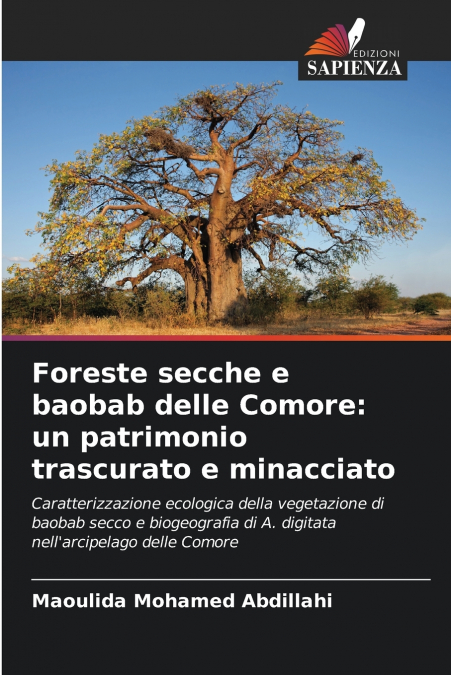
Bakolimalala Rakouth / Hassani Hassani Madi / Maoulida Mohamed Abdillahi
Due delle otto specie di baobab conosciute al mondo si trovano nell’arcipelago delle Comore. Non è ancora stato condotto uno studio approfondito sulla caratterizzazione ecologica della vegetazione secca e sulla distribuzione geografica di questi baobab. Alcuni autori ipotizzano che le formazioni vegetali secche dell’arcipelago delle Comore abbiano specie caratteristiche e affinità con la flora del Madagascar e dell’Africa e che i baobab delle Comore siano stati introdotti dall’uomo; altri propendono per un’origine naturale dei baobab via mare. Per dare una risposta a queste domande, è stata effettuata un’identificazione e una caratterizzazione ecologica delle formazioni vegetali di Grande Comore, Mohéli e Anjouan e un inventario dei baobab dell’arcipelago. La composizione floristica è simile a quella delle foreste secche e delle boscaglie del Madagascar e dell’Africa, e la distribuzione dei baobab sembra essere fortemente legata alla distanza dal mare, il che suggerisce che siano dispersi dall’idrocoro marino. Questi risultati dovrebbero incoraggiare una migliore gestione e conservazione della flora e della vegetazione secca.